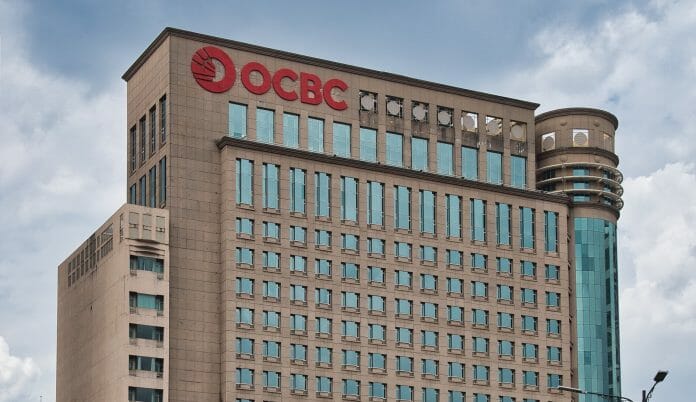OCBC Senior Asean Economist, Lavanya Venkateswaran commented to the latest economic data released by Bank Negara and says the growth data is disappointing and current account surplus is narrow but there are bright spots.
The 4Q23 GDP growth slowed to 3.0% YoY versus 3.3% in 3Q23, undershooting the advance estimate of 3.4%. With this, 2023 GDP growth was revised lower to 3.7% from 3.8%. The drag from external sector weighed down on resilient (albeit more mixed) domestic demand. This was also mirrored in the sharply narrower current account surplus to MYR0.3bn (0.1% of GDP) in 4Q24.
Notwithstanding, she said OCBC continues to forecast 2024 GDP growth at 4.2% YoY and Bank Negara Malaysia (BNM) to remain on hold this year.
On a sequential basis, the economy shrank 2.1% QoQ sa after growing 2.6% in 3Q23. Full year 2023 GDP growth stood at 3.7% YoY versus 3.8% indicated in the advance estimates.
Weak External Demand Bears Down
Although it was clear that external demand remained a drag in 4Q23, it was deep and persistent enough to offset the improvements in domestic demand. The contraction in goods exports remained deep at -12.3% YoY, albeit narrowing compared to -16.0% in 3Q24. Services export growth picked up to 37.3% YoY versus 21.2% in 3Q23 supported by higher tourism inflows.
The contraction in import growth, however, narrowed more sharply to -2.9% YoY versus -11.1% in 3Q24 underscoring the resilience in domestic demand. Goods imports growth narrowed to -5.4% YoY versus -16% in 3Q23 more than offsetting the slowdown in services import growth (9.0% versus 16.1% in 3Q24). As a result, net exports shaved off 2.7 percentage points (pp) from headline GDP growth.
…But Domestic Demand Holds Up
The domestic demand picture was resilient, led by public sector spending. Public sector contribution to growth improved to 1.8pp (3Q23: 1.0pp), as consumption and investment spending picked up in 4Q23. Private sector contribution, however, eased to 3.0pp versus 3.5pp in 3Q23 as consumption and investment spending slowed. Changes in inventories added 1.0pp to headline GDP growth.
On the supply side, the weakest link was the manufacturing sector. GDP growth fell further to -0.3% YoY versus -0.1% in 3Q23 “from continued weakness in the electrical and electronics industry”, according to BNM. Growth slowed in the construction (3.5% YoY versus 7.2% in 3Q23) and services (4.2% versus 5.0%) sectors more than offsetting the pickup in agriculture sector growth (1.9% versus 0.9% in 3Q23).
Significantly Narrower Current Account Surplus…
The external stress was visible in the sharp narrowing of the current account surplus to MYR0.3bn (0.1% of GDP) in 4Q24 from MYR9.1bn (2.0% of GDP) in 3Q23. That said, the widening of the primary income deficit to MYR20.9bn from MYR11.0bn in 3Q23 was the main driver of the reduced surplus. According to BNM, this was “due to higher investment income accrued to foreign investors in Malaysia”. The trade surplus narrowed along with the deficit on the services balance. The deficit on the secondary income account was modestly wider in 4Q23 relative to 3Q23. For full year 2023, the current account surplus narrowed to 1.2% of GDP from 3.1% in 2022.
…Net FDI Inflows Higher
The basic balance (net FDI + current account balance), however, widened to MYR5.0bn from MYR3.0bn in 3Q23. The narrower current account surplus was more than offset by higher net FDI inflows (MYR4.0bn versus outflows of MR6.1bn in 3Q23). Notwithstanding, net ‘other investments’ saw an outflow of MYR14.4bn versus inflows of MYR34.6bn in 3Q23. BNM attributed this to “higher repayment for interbank borrowing by onshore banks”. The net ‘portfolio’ and ‘financial derivatives’ balance also saw outflows in 4Q23, with the former being driven by “acquisition of debt securities abroad by resident investors”.
Cautiously Optimistic on 2024 Growth but Downside Risks Remain
OCBC’s 2024 GDP growth forecast of 4.2% underscores its cautiously optimistic growth outlook. The bank expects more visible support to GDP growth from private sector consumption and investment spending. This will complement public sector efforts to boost infrastructure spending. The recent pickup in capital goods imports in November and December 2023 is encouraging in this regard. Additionally, it expect a bottoming out of the electronics export downcycle, likely in 2H24, which will help mitigate downside risks to export growth. By extension, we expect the current account surplus to improve this year to 2.5% of GDP.
Admittedly, the risks to its 2024 GDP growth and current account surplus forecasts are skewed to the downside from persistently weak external demand conditions, geopolitical tensions and delays in the semiconductor recovery cycle.
BNM On Hold
From a monetary policy standpoint, the bank does not believe that the weakness in the 4Q23 GDP print will be sharp enough to convince BNM that rate cuts are necessary. The bar for BNM to ease this year is high and we believe it consider rate cuts only if there are persistent signs of weaker domestic demand conditions. On the flipside, we do not expect BNM to adjust rates higher in response to the government’s impending adjustment to the fuel subsidy regime. BNM has not reacted to supply side policy changes in the past and we expect it will look through higher inflation as temporary. As such, OCBC expects BNM to remain on hold through 2024.









